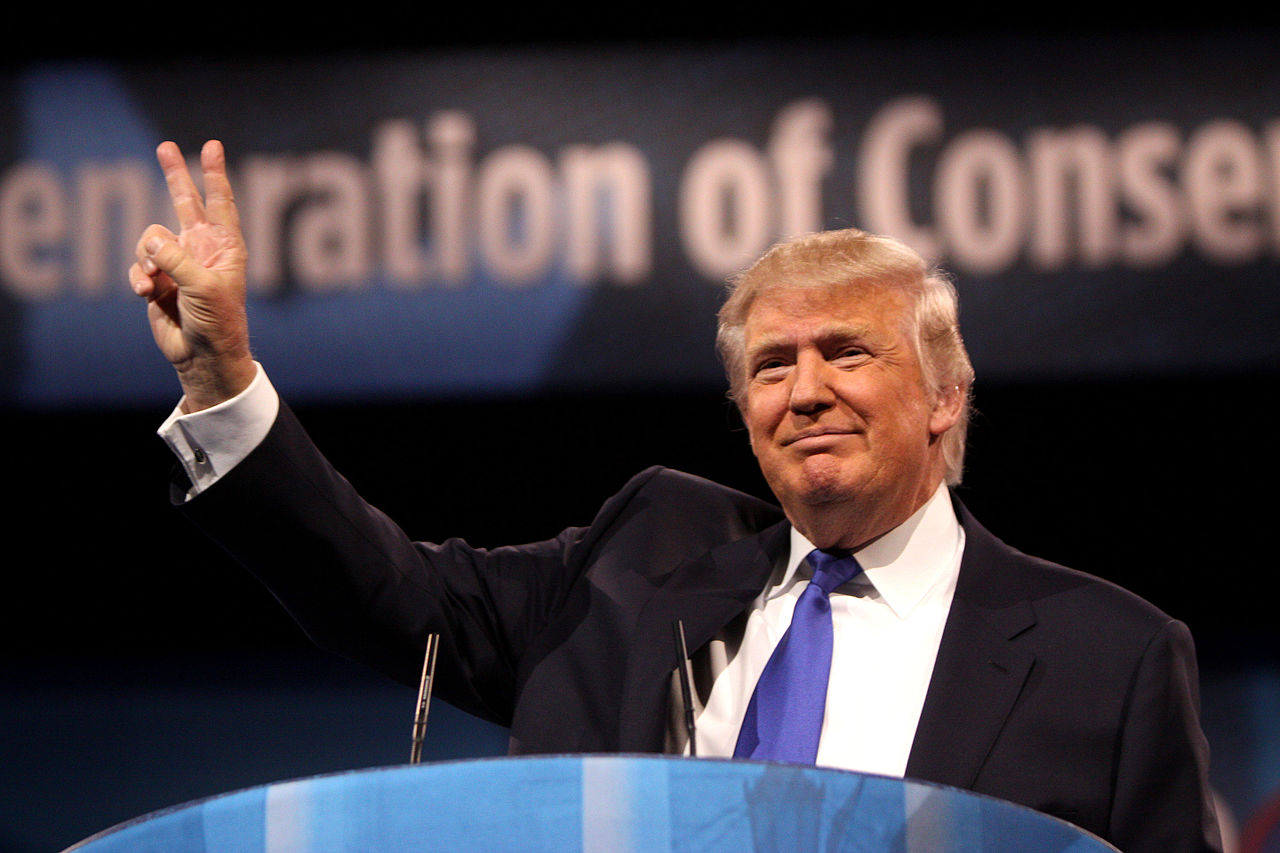A Quick Look At Trump’s Unconventional Campaign
By Tyler Bloom
Running a Presidential Campaign is a lot like writing a research paper in high school; you should have a well detailed outline in place before you start. However, more often than not, you find yourself scrambling to find the necessary resources to succeed a few days before your deadline.
In many ways, Donald Trump’s presidential campaign has read like a rushed, high school term paper.. Regardless of how he performs in November’s general election, there is no denying how historic his campaign has been due to its unconventionality and spontaneity, intentional or not. So, with the RNC underway and Trump’s nomination capping the ceremonies on Thursday, it’s the perfect time to recount how Mr. Trump took his candidacy from bully of the primary debates to the Republican nominee for president. Let’s get started:
How do you start a campaign?
The first key to winning a presidential election is raising the money to sustain your campaign. FEC rules dictate that individuals may not contribute more than $2700 to a single candidate. In light of these rules, however, candidates have found other ways to get the money they need to keep their campaigns afloat. These methods range from spaghetti dinners and bake sales to tickets to Hamilton.
But, not everyone is getting creative right? Cough Bernie Cough.
Yes. Others have succeeded in spite of the legislation, relying on individual contributions rather than the power of Super PAC money. In this year’s presidential race, Bernie Sanders managed to raise about $222 million for his campaign, 99.99% of which came from his Bernie 2016 PAC and 60% of which was contributed in amounts less than $200.
So where does that put Trump?
You might have heard, but Donald Trump is “really rich.” So rich, in fact, that he has continuously bragged about self-funding his own campaign. But is self-funding a campaign a good thing?
Trump has loaned his campaign 72% of all of the money that it has raised. Additionally, as his campaign pivoted from primaries to the general election, Trump’s FEC disclosures show us how how much the campaign relies on his own contributions: he only had $1.3 million cash on hand in May. However, as it became clearer to the major Republican players that they were more than likely stuck with Trump as their nominee, the Republican National Committee got involved with his campaign’s fundraising.
In June, the Trump campaign raised $51 million, of which $25 million was raised jointly with the Republican National Committee.
Yeesh. Doesn’t he have a staff in charge of this stuff?
Not until recently. After a candidate successfully raises the funds to jumpstart a campaign, they hire a staff. A staff should consist of the typical departments: communications, fundraising, fieldwork, and legal are all musts.
What about pollsters?
They are arguably the most important strategic personnel investment a campaign can make. Pollsters test the campaign’s messaging and branding with voters before they are put into play. While expensive, pollsters can save campaigns from major surprises when election day rolls around. The most successful campaigns hire pollsters, even if they are only there to deliver bad news.
Trump was vocally critical of pollsters when his campaign began. However, as the primary season has wrapped up, Trump’s campaign brought on Tony Fabrizio, a former pollster of Rick Perry and Rick Scott, to help prepare for the general election. Then, at the end of June, Trump brought on four more veteran pollsters, including John McLaughlin, who is focusing on New York.
Wait, but doesn’t Trump hate hearing bad news?
Yep. That would certainly explain the bevy of perplexing strategic decisions made by Trump despite the fact that he has a trained professional to help him make them. For instance, Trump has insisted in the past on keeping his campaign staff small, employing only 70 staffers as opposed to Clinton’s 732 in May.
Additionally, Trump has stated that he intends to rally the New York and California electorate and win the two states.
What? How?
Yeah, it doesn’t make much sense. Donald Trump, the Republican nominee for President whose platform has consisted largely of anti-immigrant rhetoric, wants to win two of the most Democratic and diverse states in the country. Good luck with that. And while he spends time flying coast-to-coast and burning through the little cash his campaign has, it may be prudent to look up the term Swing State.
So what now?
Well, as of recently, Trump appears to be more willing to bend to the party’s wishes and run a “conventional” campaign, which isn’t saying much. Within the past two weeks, Trump vigorously defended a tweet of his with anti-semitic roots, introduced his candidate for vice president by talking about himself for 28 minutes and stood by while his de facto campaign manager verbally attacked John Kasich, the Republican governor of the the swing state that’s hosting his convention.
To give him some credit, Trump isn’t making the wildly tone-deaf mistakes that he was earlier. For instance, after the police shootings in Dallas and Baton Rouge, Trump released strongly worded messages condemning the killings that appealed to his base, as opposed to the self-congratulatory tweet he sent after the Orlando nightclub massacre in June.
As hard as it may be for the Republican party to admit, this week’s festivities are more-or-less a victory lap for Donald Trump’s campaign. But while it may appear to be a circus in Cleveland, the one thing that we have learned consistently from Trump is to not underestimate him.
